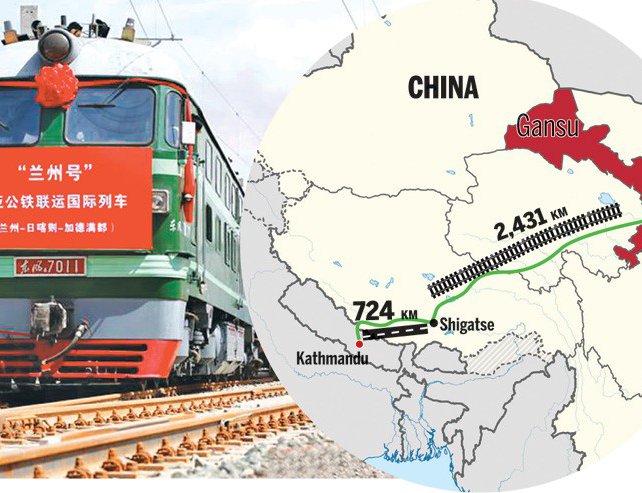
The Nepalese government recently announced that China will agree to allow the landlocked Himalayan nation to use some of its seaports. Considering around 98 percent of Nepal's third-country trade runs through India, a plan to connect the country with China will reduce its dependence on India.
However, the plan could face issues due to long-distance transport. Those Chinese seaports are located more than 2,000 kilometers from Nepal. If logistics costs become a heavy burden for importers and exporters, the proposal will be just a piece of paper.
In his article in Global Times, Hu Weijia writes besides efforts to improve the customs-clearing process by creating unified standards and streamlining the quarantine, examination and approval procedures, China needs to brainstorm with industry experts on how to reduce the transportation expenses on the Chinese side of the border. That's necessary to make the plan a dynamic trade route between the landlocked country and the outside world. For instance, encouraging Chinese railway companies to launch direct services between cities near the China-Nepal border to the seaports will be a way to achieve this goal.
Further, China and Nepal need to speed up efforts to build a cross-Himalayan connectivity network through railways, roads and air routes. If a rail connection between Gyirong in Southwest China's Tibet Autonomous Region and Nepal's capital of Kathmandu can be achieved, the two countries can establish an integrated network of rail freight. China and Nepal should also upgrade their highways to promote infrastructure interconnections. If transportation costs can be reduced, the reported third-country trade plan is likely to be a game-changer in terms of trade, connectivity and economic integration in South Asia. Nepali cargo from Northeast Asian countries such as Japan and South Korea could be the first beneficiary of the proposed new trade route.
One inevitable consequence is that Nepal's third-country trade plan with China will end India's monopoly over Nepal's trade routes and thus dilute the influence of New Delhi in the Himalayan nation. But China's purpose in pushing forward the plan is not to derail Nepal's relationship with India. China's economic cooperation with Nepal does not target any third party, including India. In contrast, the third-country trade plan between China and Nepal is likely to be a component of economic integration in the region and benefit all South Asian countries.
- Kathmandu Chronicle: Reclaiming India-Nepal Relations
- Apr 20, 2024
- India Provided Financial Support To Build Schools In Darchula
- Apr 20, 2024
- Iranians Protest After Attack
- Apr 20, 2024
- Weather Forecast: Light Rain Is Likely To Occur At Few Places In Koshi, Bagmati, Gandaki And Karnali Provinces
- Apr 20, 2024
- Japanese Ambassador Kikuta And DPM Shrestha Shared The Views to Deepen Nepal-Japan Bilateral Relations
- Apr 19, 2024
















